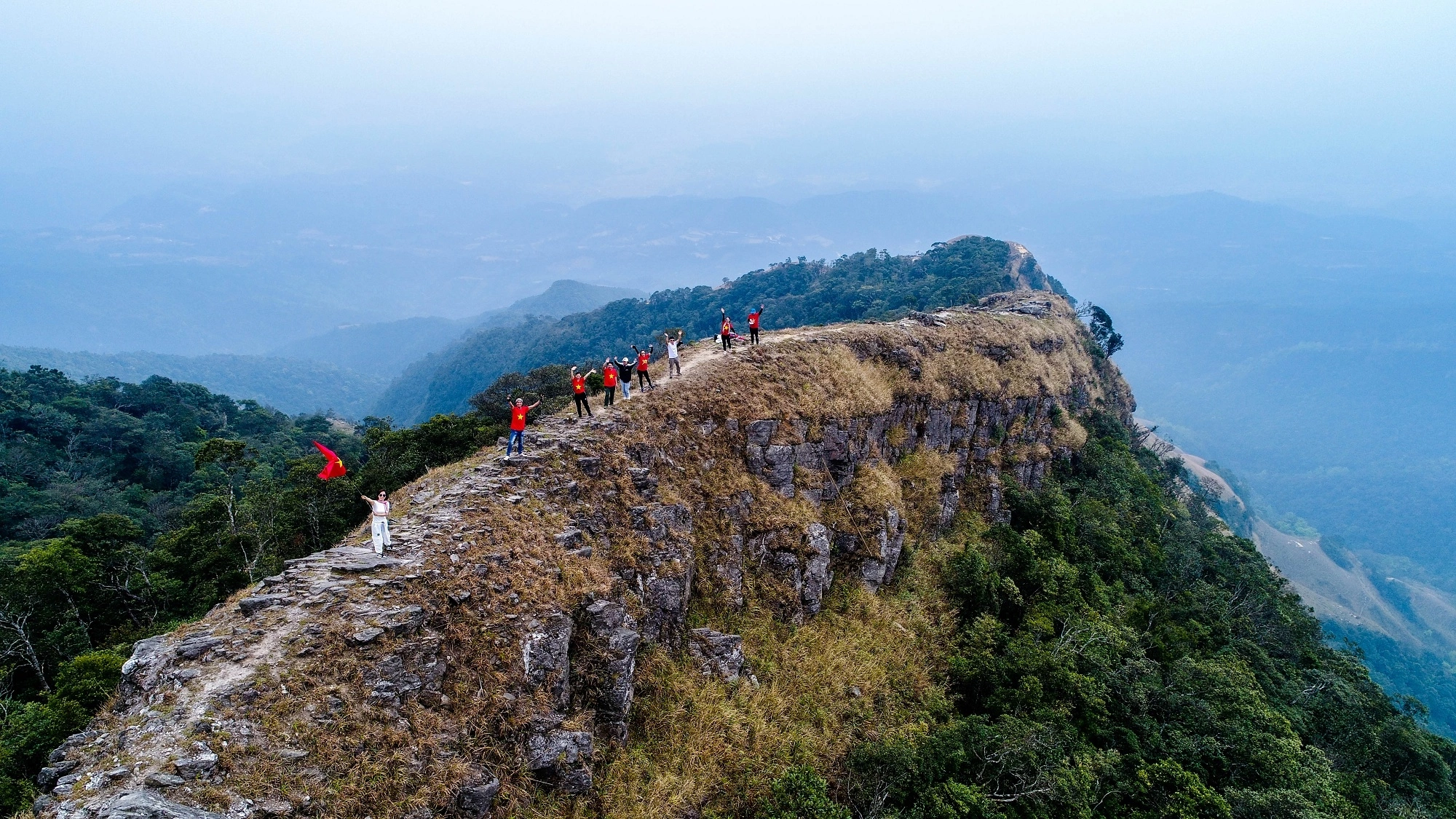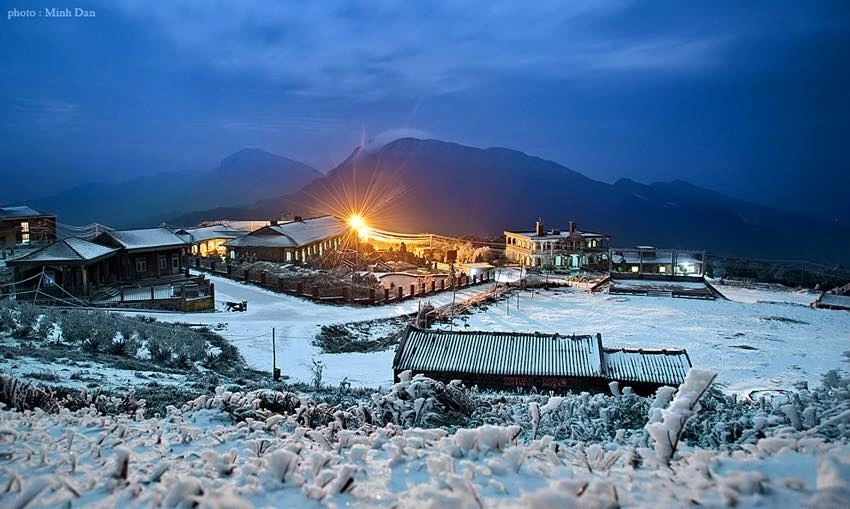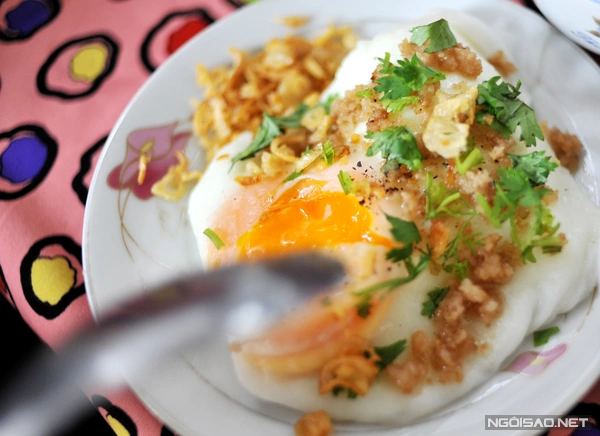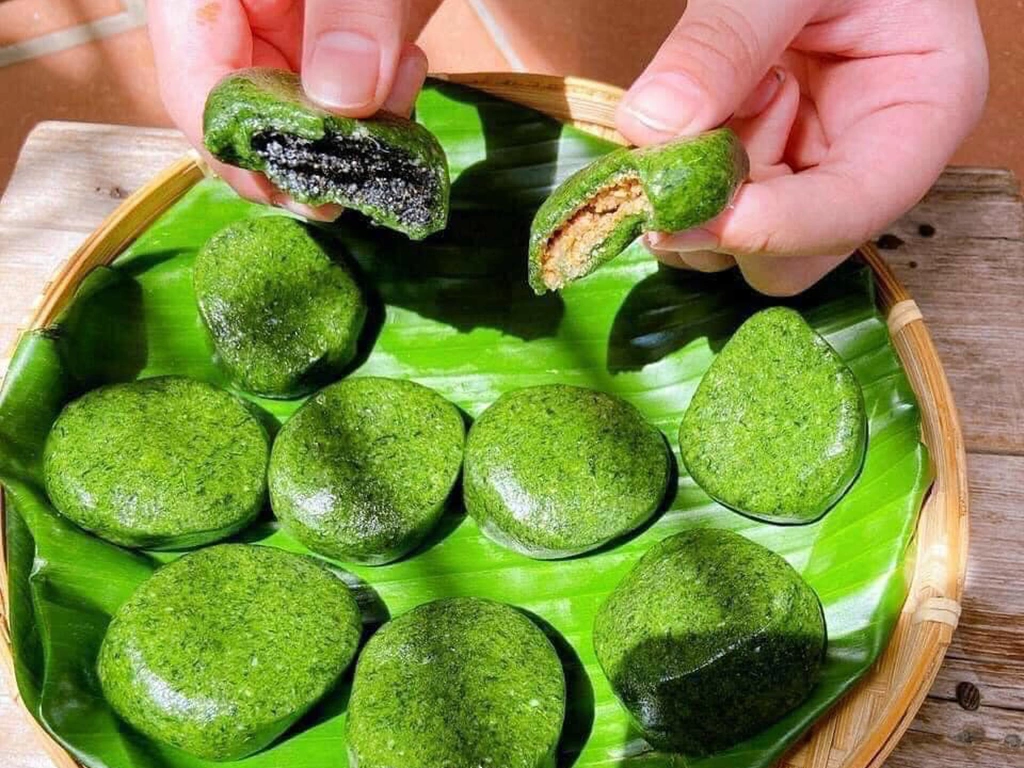
Lang Son Province, nestled in the northern mountains of Vietnam, shares its borders with Cao Bang, Quang Ninh, Bac Giang, Bac Kan, Thai Nguyen, and the city of Sung Ta in Guangxi Province, China. The province is 123 kilometers from Hanoi.
Lang Son boasts an array of enchanting mountains, historical relics, and traditions that resonate with Vietnamese national identity. The province's tourist hotspots are concentrated in Lang Son City, its capital of the same name, and the districts of Bac Son, Huu Lung, Binh Gia, and Loc Binh. Additionally, Lang Son plays host to numerous traditional folk festivals.
Climate-wise, Lang Son experiences a subtropical climate typical of northern Vietnam. It features a distinct separation between winter and summer. The annual average temperature spans from 17 to 23 degrees Celsius. Winters, especially in the high Mau Son peak area, can plummet below freezing, resulting in icy conditions and snowfall. Summers see temperatures hovering around 30 degrees Celsius.
The province's rainy season predominantly falls during the summer months, spanning from June to August. As a result, the dry winter season proves ideal for tourism despite the cold.

In the winter, a pure blanket of white snow adorns the summit of Mau Son. Photo by Luu Minh Dan
Ky Lua Walking Street
Ky Lua Walking Street opened on October 16, 2020, coinciding with the celebration of the 70th anniversary of Lang Son City's liberation. This walking street welcomes visitors every Friday and Saturday between 6 p.m. and 11 p.m.
Situated in the vicinity of the Ky Lua Market, encompassing Bac Son, Le Lai, Tran Quoc Toan, and Luong Van Tri streets, the promenade offers a myriad of activities. These include traditional folk games, cultural and artistic performances, the opportunity to savor diverse local cuisine, shop for everyday items, and collect Lang Son souvenirs.
Dong Dang International Railway Station

Situated to the north of Dong Dang Town in Cao Loc District, approximately 15 kilometers from Lang Son City, you will find the Dong Dang International Railway Station. This station has gained prominence not only for its pivotal role in the transportation industry but also as a destination for both local and international tourists in recent years.
A standout moment occurred on Feb. 25, 2019 when it became the inaugural stop on North Korean President Kim Jong Un's historic visit to Vietnam, where he participated in the U.S.-North Korea Summit.
Tam Thanh Pagoda and Tam Thanh Cave
Tam Thanh Cave in Lang Son City forms part of the scenic relic complex comprising Nhi, Tham Thanh and To Thi mountains, and the Mac Dynasty Citadel. The cave features intricate formations and spacious, airy domes. Deeper inside the cave lies the beautiful and pristine Am Ty Lake.
The cave also houses Tam Thanh Pagoda, a place that was once dedicated to Taoist worship and the Three Pure Ones, known as "Tam Thanh" in Vietnamese, from which it derives its name.
Over time, as a result of various influences, Taoism gradually waned in the hearts and minds of the local populace. Consequently, elements of Buddhist worship and the veneration of Saints were integrated into this sacred site. Annually, during festive occasions, the pagoda becomes a magnet for visitors hailing from near and far, who come to explore its grounds and seek blessings for good fortune.
Lang Son Ancient Citadel

The Lang Son ancient citadel retains its timeless appearance. Photo courtesy of Lang Son Tourism Promotion Information Center
Located in Chi Lang Ward, this historic site is a national treasure. In the past, it was the heart of Lang Son, serving as the center for politics, economics, and culture, bustling with trade. The citadel was designed in a rectangular layout with four gates, each representing a cardinal direction, featuring intricately carved large stones and hinged blocks. Today, only the west and south city gates have survived.
To Thi Mountain
Perched at the heart of Tam Thanh Commune, To Thi Mountain, also known as Vong Phu Mountain, holds a poignant legend. The tale is of the love of To Thi, who held her child and waited patiently for her husband's return from the battlefield. As time passed without any sign of her husband, both mother and child transformed into stone.

The rock formation that resembles a woman cradling a child has gained fame as a popular tourist destination at To Thi Mountain. Photo courtesy of Lang Son Tourism Promotion Information Center
Today, atop To Thi Mountain, a natural rock formation remarkably resembles a woman cradling a child, giving rise to its name as Vong Phu' Mountain, symbolizing the unwavering devotion of Vietnamese women. "Vong phu'' (waiting for husband) describes a woman who has lost her husband and is now living as a widow. This mountain is not only the most famous scenic attraction in Lang Son but also a wellspring of inspiration for various artistic works.
Mac Dynasty Citadel

Ascending the steps from bottom to top of Mac Dynasty Citadel offers a peaceful mountain experience full of fresh air. Photo courtesy of Lang Son Tourism Promotion Information Center
Next to To Thi Mountain is a valley protected by two stone walls, which are the remnants of the Mac Dynasty Citadel, built in the 16th century as a key defense point along Vietnam’s main North-South route. Today, the Mac Dynasty Citadel retains a well-preserved wall that's 300 meters long and one meter thick. From the citadel entrance, visitors can also enjoy a panoramic view of Lang Son City.
Mau Dong Dang Temple
In the center of Dong Dang Town, the Mau Dong Dang Temple is a respected place of worship celebrated for its architecture, historical value, and spiritual meaning. The temple has five sacred areas, including the innermost section dedicated to Cundī Buddha and Guanyin, as well as the Three Temples of Mother Goddesses.

The temple is a sacred place surrounded by numerous trees. Photo courtesy of Lang Son Tourism Promotion Information Center
One of the annual highlights is the Long Tong Festival, held at Mau Temple on the 10th of the first lunar month, featuring captivating activities like lion dances and traditional martial arts.
Huu Nghi International Border Gate

The Huu Nghi international border gate’s modern design. Photo courtesy of Lang Son Tourism Promotion Information Center
Situated 17 kilometers north of Lang Son City on National Highway 1A, the Huu Nghi International Border Gate serves as a vital crossroads for economic development and trade between Vietnam and China. It also marks the junction of the Nanning-Hanoi expressway. The border gate is marked by milestone 1116 on the Vietnamese side and milestone 1117 on the Chinese side.
Markets
Lang Son is renowned for its bustling markets, drawing the affection of many tourists. Notable markets include Dong Kinh, Ky Lua, Dong Dang, and Tan Thanh border gate markets. These commercial complexes offer hundreds of stalls selling a vast array of goods. Here, shoppers can find products of various types, qualities, and prices.
Wandering through these markets, one may find themselves spending more money than planned. Bargaining is a skill worth honing, as it can help secure your desired items at favorable prices. While these markets may not be as vibrant as they were a decade ago, they remain popular destinations for tourists.
Bac Son Flower Valley

Located in Lan Khoang Village, Tran Yen Commune, Bac Son Flower Valley spans over 20 hectares and beckons young visitors with its captivating ambiance. The valley offers an ideal setting to relish fresh air while indulging in the fragrant embrace of blooming flowers. Decorative photo corners, seasonal flowers, and seemingly endless rice fields accentuate the valley's charm.
Mau Son National Tourist Area
Mau Son National Tourist Area is 30 kilometers northeast of Lang Son City and accessible via National Highway 4B. In the 1930s, alongside renowned destinations like Da Lat, Sa Pa, Ba Na, and Tam Dao, Mau Son caught the attention of the French who chose it as a site to construct lavish villas for their officials to unwind. Perched at an elevation of 1,200 - 1,541 meters above sea level, the area boasts a blend of tropical and temperate climates, offering refreshing coolness in the summer and chilly winters. Notably, Mau Son peak is one of the two peaks in the northern region that frequently experiences snowfall during winter.

Mau Son Peak is characterized by a winding road that meanders through the natural surroundings. Photo courtesy of Lang Son Tourism Promotion Information Center
Visitors to Mau Son can embark on treks through the ancient forest to witness the beauty of azalea flowers, explore the Linh Dia Mau Son area with its remnants of a once thriving religious center, immerse themselves in unique cultural traditions, and savor rare and exquisite local delicacies.
Trekking on Phia Po Peak
Phia Po, also known as Cha Mountain Peak, is in Mau Son Commune, Loc Binh District, standing tall at an elevation of 1,541 meters above sea level. To reach Phia Po, visitors can take Highway 4B from Lang Son City towards Loc Binh District, and then continue for approximately 6 kilometers to reach an inter-village road leading to the base of the mountain.
Cha Mountain showcases expansive green grass slopes during the summer, which gradually turn yellow in the winter. The area boasts fresh air, stunning natural scenery, abundant and unspoiled flora, and one of the most diverse primeval forests in the northern region.
The journey to conquer Phia Po is typically divided into two stages. On the first day, trekkers cover a distance of 3.5 kilometers from the base of the mountain to the campsite, where they can set up tents for overnight rest. On the second day, they continue the trek towards the summit, covering a similar distance. The total distance covered during the two-day trek is approximately 14 kilometers.
Dang Mo Waterfall
Dang Mo (Cow Nose) Waterfall is in Binh Gia District. The name of the waterfall is said to originate from the Tay ethnic people, who named it after two upstream streams that merge to form the waterfall, resembling the shape of a cow nose.

The water at Dang Mo Waterfall flows in three layers. Photo courtesy of Lang Son Tourism Promotion Information Center
Dang Mo Waterfall maintains a continuous flow throughout the year and is surrounded by untouched mountains and forests. Alongside the waterfall, visitors can admire rocks of various shapes adorned with green moss. Ancient trees stretch out towards the middle of the waterfall, adding to the mysterious beauty of the place.
Chi Lang Pass
Chi Lang Pass is a historically significant pass in Lang Son, located in Chi Lang Commune. In the past, this area served as a defensive barrier protecting Thang Long (present-day Hanoi) from northern invasions. Stretching for 20 kilometers, the pass connects Chi Lang and Huu Lung in Lang Son Province.

Chi Lang Pass bears witness to numerous wars in Vietnamese history and is flanked by the Kai Kinh mountain to the west, with high rocky mountains at both ends of the pass, creating a strategically advantageous position. These geographical features played a crucial role in the victories against the Ming army and the defeat of the Qing invaders.
Huu Lung Steppe
The Huu Lung Steppe, also known as Dong Lam Steppe, is in Huu Lien Commune, Huu Lung District. It spans an area of 100 hectares and is renowned for its lush green grass and clear lake, nestled amidst majestic cliffs.
The steppe is most captivating before the rainy season, typically from March to May when the water level is low, revealing verdant peninsulas. During this season, the trees flourish, exuding vitality, and the weather is cool, making it an ideal time for camping, outdoor activities, and horseback riding.
To preserve the ecosystem of the area, visitors are not permitted to drive into the valley. Instead, they can walk approximately 500 meters or hire transportation services to reach the destination.
Roast pig and duck
Roast pig and duck with mac mat (clausena indica) leaves are renowned specialties that showcase the distinct flavors of Lang Son. Apart from the meat, the unique taste of mac mat leaves adds an extra dimension to the dish. These leaves, known for their fragrant aroma and peculiar flavor, are often used in the cuisine of the Tay and Nung ethnic groups.
To prepare the dish, the leaves are soaked in spices and then stuffed into cleaned pork and duck bellies. The openings are sewn closed, allowing the meat to absorb the flavors before being roasted.
The secret lies in the skill of the chef, who evenly spreads a mixture of honey and warm water on the pig. The honey not only prevents cracking but also imparts a shiny, crispy yellow color to the skin. The dish is considered perfect when the meat is tender, moist, and chewy.
Visitors to Lang Son can also indulge in duck pho, a variation of the popular Vietnamese noodle soup.
Sour pho
Lang Son sour pho is served on a large plate, featuring a bed of pho noodles topped with char siu meat, cucumbers, roasted peanuts, fried sweet potatoes, and fried shallots. Sour pho antalizes the taste buds with its perfect balance of sour, spicy, salty, and sweet flavors. The key ingredient in the sauce is sugar vinegar, mixed with fried shallots, garlic, fish sauce, and ginger.

Sour pho captivates diners with its assortment of ingredients and refreshing flavor. Photo courtesy of Lang Son Tourism Promotion Information Center
Sour pho has a cooling nature, making it an ideal choice for hot days. However, it can still be enjoyed during winter by warming up the sauce and noodles. To customize the flavor, add a few slices of fresh chili, a squeeze of lime, or a sprinkle of pepper for a lighter, more nuanced taste.
Egg rice rolls

Lang Son's egg rice rolls are made from a mixture of rice and water, resulting in a batter that is neither too dry nor too thin. The batter is placed in a steamer lined with a thin cloth, allowing it to cook thoroughly as the hot steam permeates through the fabric.
Distinct from regular rice rolls, Lang Son's version incorporates eggs into the filling. Additionally, authentic rice rolls must be savored with a dipping sauce that combines a special vinegar that can only be found in Lang Son.
Khau nhuc (steamed pork belly)
Khau nhuc, also known as nam khau, originated from China and was introduced to Vietnam by the Tay and Nung ethnic groups. This dish is typically reserved for special occasions, weddings, and elaborate feasts.

The main ingredients include pork belly, taro, and a blend of spices such as onions, garlic, ginger, minced basil, sugar, pepper, oyster sauce, five-spice powder, a touch of white wine, and chopped tau soi - a salty fermented vegetable favored by the Tay and Nung people. The dish undergoes multiple cooking stages, including boiling, roasting (frying), and steaming.
Khau nhuc is commonly enjoyed with rice, bread, and vegetables for breakfast or as a main meal. The meat turns tender, absorbing the flavors of taro and spices, while the skin acquires a subtle sweetness without feeling greasy.
Magenta sticky rice

Magenta sticky rice is crafted from sticky rice infused with magenta leaves. In some areas, ash from straw and dried banana leaves is also used. The process involves mixing crushed leaves and ash, washing it with clean water, and filtering out any residue. The sticky rice is then soaked for about 6 hours. After this, it's cooked in a sticky rice pot, often with a dash of white wine, for approximately an hour. The result is a delightful dish – sticky and aromatic, with a beautiful purple hue. It pairs wonderfully with chicken or salted peanuts.
Huu Lung grilled pork rolls

If you're seeking Lang Son specialties as gifts, Huu Lung grilled spring rolls are an excellent choice. These pork rolls are made from finely chopped meat, pork skin, and mushrooms, wrapped in fresh banana leaves. After a short fermentation period, the pork rolls develop a tangy flavor. When ready to eat, they can be grilled for added smokiness.
Mugwort cake

Mugwort cake is made from fresh mugwort leaves boiled in clean ash water until soft. The leaves are then washed, fibers removed, and crushed in a mortar. The cooked ingredients are finely pounded with the crushed mugwort leaves to create a smooth and flexible dough, which is then used to make the cakes. Mugwort cakes typically come with two types of fillings: sesame paste with finely crushed sugar or black sesame paste.
Traveling to Lang Son is convenient, with a well-maintained road network connecting it to Hanoi. Covering approximately 160 km, the journey takes less than three hours, primarily on well-constructed highways. Travelers departing from central Hanoi should head towards the Long Bien District, transition to the Bac Giang Highway, and continue straight to Lang Son.
Various passenger bus companies provide transport to Lang Son, such as Duy Quang, Hoang Ha, Quynh Thanh, and Van Ha, offering ticket prices ranging from VND250,000 to VND350,000 ($10 to $14) per ticket.
Passenger buses with 26 seats typically cost between VND120,000 and VND180,000 per ticket. These buses depart from various locations in Hanoi, including My Dinh, Giap Bat, and Gia Lam terminals. Visitors from other provinces can travel to Hanoi and then proceed to Lang Son using these options.
Lang Son offers a range of accommodation options, catering to different budget preferences. In the city, visitors can choose from 4 to 5 star hotels like Sheraton Lang Son and Muong Thanh Luxury, with nightly room rates ranging from VND1.2 million to VND1.4 million ($49 to $57).
3-star hotels like Sojo, Long Vu, Tra Linh, Dong Phuong, A1, and Phu Quy provide accommodation at prices between VND400,000 and VND700,000 per night.
Affordable motels and hotels are also available, with rates ranging from VND150,000 to around VND300,000 per night.
Outside the city, areas with abundant tourist attractions include Bac Son District, Binh Gia District, Huu Lung District, and Loc Binh District. The Provincial Tourism Promotion Center recommends various motels and homestays in these areas:
- In Huu Lung District: Rung Xanh, Yen Nhi, Binh Minh, Thang Lien.
- In Bac Son District: Golden Field, Thuy Tien, stilt houses in Ban Chan.
- In Binh Gia District: Hong Son, Van Quang, Van Tuyen.
- In Loc Binh District (Mau Son area): Chan May, Cong Doan, Hoa Qua Son, Huong Son, May.
When visiting Lang Son, it is advisable to carry your passport and all necessary personal documents, as you may consider a short trip across the border to China.
While shopping at the markets in Lang Son, exercise caution and inquire thoroughly to avoid purchasing low-quality goods at inflated prices.
Story by Tam Anh, Phuc Trinh